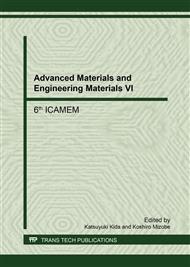p.187
p.192
p.197
p.202
p.207
p.212
p.218
p.224
p.229
Multi-Objective Optimization in Electrical Discharge Machining of 6061 Al/SiCp Using RSM and NSGA-II
Abstract:
In this paper, response surface methodology (RSM) and non sorting genetic algorithm (NSGA-II) are used to optimize the multi-responses of electrical discharge machining of Aluminum Alloy 6061/10%SiCp composite. Experiment is performed to evaluates the effects of process parameters namely peak current, pulse on time, pulses off time and gap voltage on the responses material removal rate (MRR) and tool wear rate (TWR). The central composite rotatable design (CCRD) is utilized to design the experiment using RSM. Analysis of Variance (ANOVA) test is performed to validate model and to further establish the mathematical relation between process parameters and responses. Results are analyzed using ANOVA models. NSGA-II is used to optimize two conflicting responses i.e MRR and TWR. Finally results are validated by confirmatory experiment.
Info:
Periodical:
Pages:
207-211
Citation:
Online since:
August 2017
Authors:
Price:
Сopyright:
© 2017 Trans Tech Publications Ltd. All Rights Reserved
Share:
Citation:


